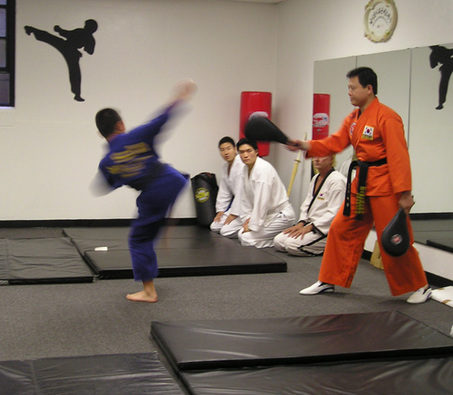Want info on the Korea Martial Arts Background? Learn more about the background of Korea Martial Arts and its evolution into a global sport…
There are different kinds of Korean martial arts that either originated independently in the country or were modified from different Oriental styles. Korea Martial Arts Background reveals a rich and interesting history and some of the well-known types of Korean martial arts include kuk sool won, hapkido, taekwondo, Tang soo do and finally hanmudo.
Korea Martial Arts Background History
With Korean martial arts dating back to more than 2000 years very little is known about the other fighting methods utilized in the country. The only other unarmed style of fighting used in Korea in ancient times was wrestling, which was utilized to train soldiers or as a sporting event in villages. The Korean region is not known for its early use of metallic warfare equipment and weapons because iron was introduced in 300 BC in the region.
Korea Martial Arts – Subak
One important type of martial arts form is the Subak, which was popularized during the Goguryeo Dynasty spanning from the 37 BC – 668 AD. It was utilized as the empty-handed fighting technique and most of it has been preserved in the paintings on the royal tombs dating from this era. There are also many government records referring to the earliest form of Korean martial arts known as Subak that date back to the Goguryeo Dynasty along with the Joseon Dynasty of the years 1392-1910.
Korea Martial Arts – Taekgyeon
An analysis of the Korean martial arts background and history reveals that the warriors of the Silla Dynasty, which spanned 57 BCE-668 CE actually picked up the art of Subak from the armies of Goguryeo when they provided assistance against the invading Japanese armies.
Eventually this evolved into Hwarang and was promoted throughout the Korean peninsula. There were some spiritual aspects added into this martial arts genre by Buddhist monks. This made the Korean martial arts a well-rounded form of responsible combat.
Moral Code of Conduct for Korean Martial Arts
In the year 680 a moral code of conduct was established for martial arts practitioners. It included five basic rules that pertain to unwavering loyalty to the king, respect towards parents, justice when killing, courage during battle and, finally, being faithful to friends.
Dae Kwae Do
Eventually the Goryeo government banned civilians from practicing as it led to the creation of games based around the martial art form and were utilized for betting. Since Subak was now restricted to the armed forces it was eventually divided into two categories. One is taekgyeon while the second one is yusul.
Records and Manuals on Korean Martial Arts Background
Many techniques were lost after this dynasty and the following one faded away and there are very few records and books showing taekgyeon practitioners.
After the Imjin War 1592-1598 between the Koreans and Japanese, there was a great deal of loss in terms of cultural heritage and people during the war. The Koreans warded off the invaders with the help of the Chinese but the Japanese were equipped with Portuguese guns while the Koreans had turtle ships that could withstand attacks of gunfire.
During one of the skirmishes the Koreans discovered a manual related to Korean martial arts with the title of Ji Xiao Xin Shu. It was in fact written by Qi Jiguang who was a renowned military strategist of Chinese origin.





